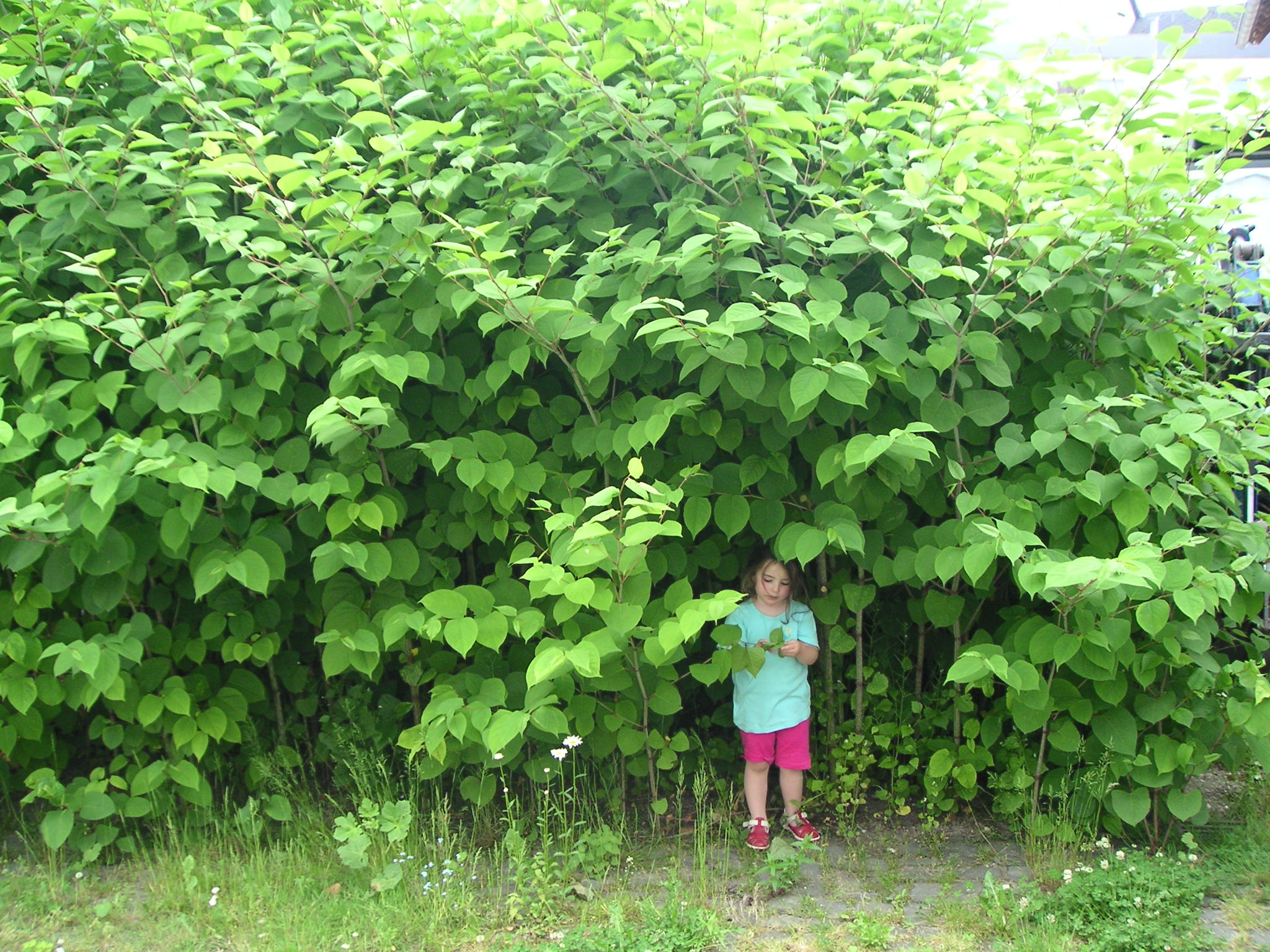
Gav~commonswiki, CC BY-SA 3.0
The Dual Nature of Japanese Knotweed
By Gayil Nalls
Sign up for our monthly newsletter!
J apanese Knotweed (Reynoutria japonica), also known as Polygonum cuspidatum and Fallopia japonica, is a robust herbaceous perennial belonging to the buckwheat family, Polygonaceae. Native to China, Japan, and Korea, its stems are harvested as a wild-foraged vegetable in various parts of the world, including throughout the United States during spring. In late summer, it blooms with dangling clusters of ivory flowers that emit a delightful scent, attracting honeybees with its prized nectar. This results in honey reminiscent of the richness of buckwheat.
Beyond its culinary uses, Japanese Knotweed boasts a rich history in traditional medicine spanning over two millennia. Recent studies highlight its abundance in the powerful polyphenol resveratrol, an antioxidant renowned for its anti-inflammatory properties. Today, it is utilized in treating ailments such as cardiovascular diseases, cancer, Alzheimer’s, and Lyme disease, an epidemic spread by tick bites that is on the rise in countries around the world. Foraged tender young shoots, tasting akin to rhubarb, are particularly prized for their high concentration of resveratrol and are used in supplements, powders, and tinctures.
Despite its medicinal and culinary merits, Japanese Knotweed poses a significant ecological threat. Classified as one of the world’s worst invasive species by the World Conservation Union, it has established itself in 42 U.S. states, wreaking havoc on native ecosystems. Its rapid growth rate, ability to outcompete indigenous flora, and resilience to eradication efforts make it a formidable adversary.

In places like County Kerry, Ireland, Japanese Knotweed has proliferated, causing urgent problems. Its unchecked spread has disrupted urban and rural landscapes, threatening biodiversity by monopolizing habitat resources and destroying native plants. Despite stringent regulations and costly eradication measures, the presence of Japanese Knotweed persists. This is also the case for upstate New York, where large swaths can be seen in drainage ditches, along trails, creeks, the edges of wooded areas, and the banks of the Hudson River. In instances like these, prevention remains paramount, emphasizing the swift restoration of disturbed areas with native vegetation. Additionally, informed response protocols are essential, delineating strategies for harvesting, management, and, if necessary, eradication by chemical and physical means. An information campaign advocating these measures is crucial for fostering community engagement and compliance with local policies.
Exploring innovative solutions and ways to harness the plant’s attributes could help manage its unchecked spread. Japanese Knotweed has high energy content, making it a perfect feedstock for bioenergy production. Sustainable harvesting practices and robust area management policies may offer a viable path forward. A balanced coexistence with this enigmatic plant could be achieved by integrating ecosystem conservation with resource utilization.
While eradication efforts continue, embracing the ethos of “if you can’t beat them, eat them” presents a novel perspective. Foraging invasive species like Japanese Knotweed and incorporating them into gourmet cuisine is a culinary adventure and promotes environmental stewardship. Luckily, there are now many Knotweed recipes online.
In our pursuit of harmony between nature and society, leveraging ingenuity and resilience to navigate the complexities posed by Japanese Knotweed can turn a challenge into an opportunity for innovation and conservation.
For those who are at their wit’s end, here’s a link to tips on eradicating Japanese Knotweed: https://www.tipsbulletin.com/how-to-get-rid-of-japanese-knotweed/
Check out our recipe for Japanese Knotweed Sorbet!
Gayil Nalls, Ph.D., is the creator of World Sensorium and founder of the World Sensorium/Conservancy.
Plantings
Issue 36 – June 2024
Also in this issue:

World Sensorium: Mapping the Cultural Heritage of Aromatic Plants
By Gayil Nalls

Viriditas: Musings on Magical Plants—Rosa spp
By Margaux Crump
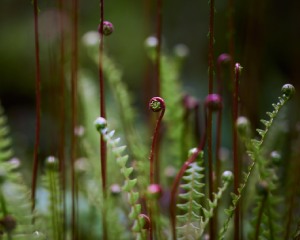
I Think, Therefore I Relate
By Jake Eshelman
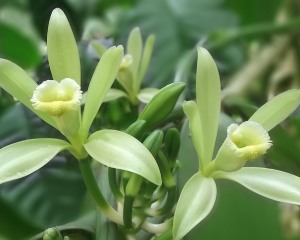
The Boy Who Was King of Vanilla
By Elena Kazamia
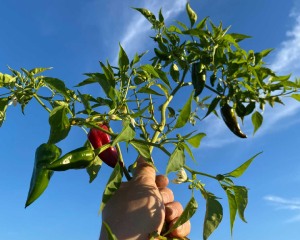
Learning to Grow with The Hampton’s Pepper Professionals
By Ian Sleat
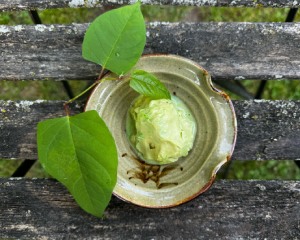
Eat More Plants Recipes:
Japanese Knotweed Sorbet
By Gayil Nalls
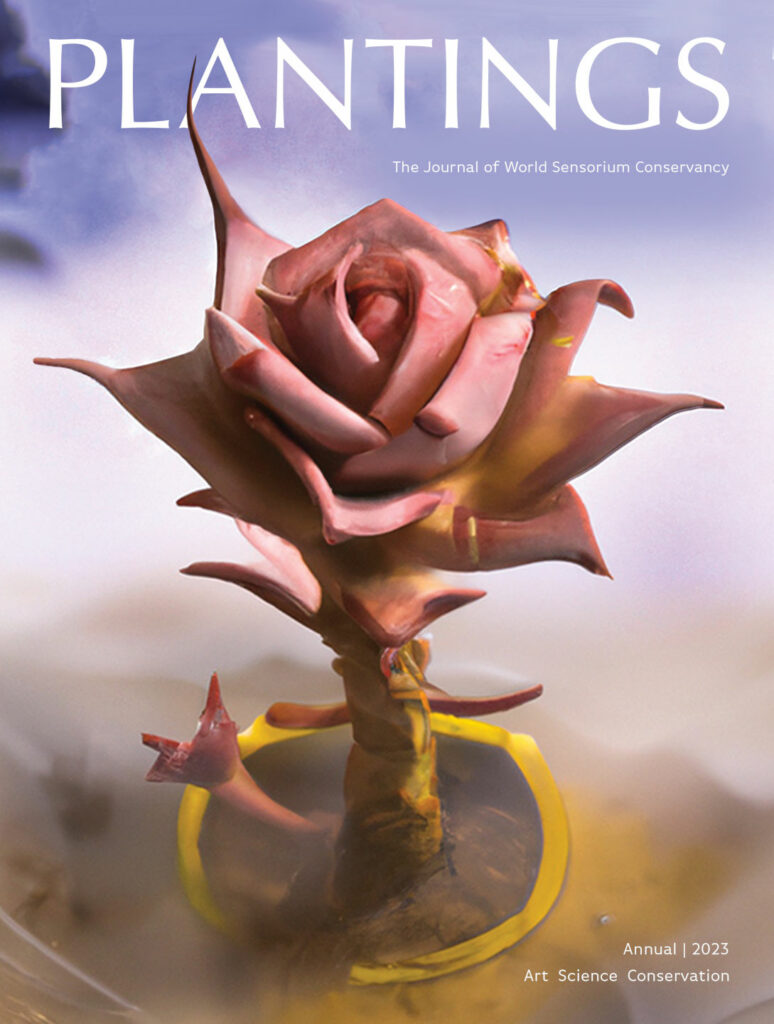
Plantings Print Annual 2023
Do you have the 2023 Plantings print annual?
Plantings cultivates innovative ideas and fresh perspectives, nurturing the global conservation community. Our readers find inspiration in forward-thinking individuals and approaches dedicated to fostering a better life for the planet and all its inhabitants.
The 2023 edition of Plantings is available in our store for shipping.

